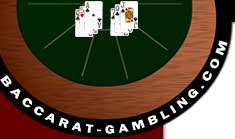
|
John Grochowski's Gaming
Column
By John Grochowski
May 12, 2006
Games played on
machines - reel-spinning and video slots, video poker, video blackjack
and others - share a common strength in that they have low minimumbets,
but also have a common weakness in that they play very fast, with so
many wagers per hour that players tend to risk more money than they
think they do.
On the tables,
the situation is the exact opposite. Minimum bets are much higher but
play on the tables is slower. A slot player betting threequarters at
a time actually risks more money per hour than a blackjack player at
a full table betting $5 a hand.
Of course, there's
more to the strengths and weaknesses of casino games than bet size and
speed of game. The last two weeks we checked what machine games had
to attract, or repel, players. This week and next, let's do the same
for the most popular table games.
BLACKJACK
Strengths: One of the few casino games in which it's possible to gain
a mathematical edge on the house. Its status as a beatable game, throughcounting
cards, has long made blackjack the most popular casino table game, even
though the vast majority of players can't beat it. More realistically,players
who learn basic strategy can cut the house edge to about a half-percent,
plus or minus a few tenths depending on house rules. Strategydecisions
that make a difference in outcome make the game highly interactive.Variation
in rules from casino to casino gives the smart player the opportunity
to shop around for the best deal. Easy to play at a beginner'slevel,
with many people having played blackjack for fun at home before ever
playing in a casino. Fairly easy pace at a full table. If all spots
are fullat a seven-player table, the game moves at about 50 hands an
hour, only a tenth or so of the speed of playing slots.
Weaknesses: It
takes some work and study to master basic strategy and narrow the house
edge. Against most players, house edge is about 2 to 2.5 percent, and
even higher against pure hunch players. Variations in rules from casino
to casino are a trap for the unwary. If you don't know what you're lookingfor,
you could be caught in a game with an unusually high house edge - Las
Vegas Strip games that pay only 6-5 on blackjacks instead of the standard3-2.
Minimum bets tend to be fairly high - there are some $1 and $2 tables
in Nevada and a few other jurisdictions, but in the Chicago area, it
takesat least $5 a hand to play, and most tables have minimums of $10,
$25 or more. There is an intimidation factor. Some players berate others
they thinkhave made strategy mistakes. The ones doing the berating aren't
always right, but the situation can be uncomfortable.
CRAPS
Strengths: The most social of casino games - camaraderie among players
is stronger at craps than anywhere else in the house. Players who bet
with theshooter win together and lose together, and a shooter on a hot
roll draws some of the most raucous cheers in the casino. A wide variety
of wagersincludes some with very low house edges - 1.4 percent on don't
pass or don't come; 1.41 percent on pass or come; 1.52 percent on place
bets on 6 or 8.Those with the bankroll to back their pass/come with
free odds, or lay the odds behind don't pass/don't come, can drop the
house edge into the tenthsof a percent. Dozens of possible wagers allows
players to choose bets or make multiple bets that suit their own gambling
personality, whether theywant to grind it out with the lowest house-edge
wagers that take multiple rolls to decide, or take a chance on bigger
wins and faster losses onone-roll propositions. Perhaps the most interactive
casino game - players pick up the dice and roll, and feel as if they're
in control.
Weaknesses: Most
of the dozens of wagers available at craps are bad bets, with house
edges up to 16.67 percent. Players looking for quick, large winsgravitate
to the bets that deplete bankrolls the fastest. Game is faster than
most table games - 100 rolls of the dice an hour even at a full table.Players
who like rapid action will see that as a plus, but it does mean a high
risk per hour, especially for players who make multiple bets. Craps
canbe intimidating to a newcomer - the layout is busy, the sheer variety
of bets can be confusing and there is nothing on the table that indicates
howto make the bets.
BACCARAT
Strengths: As simple as a table game can get - choose whether to bet
on banker or player and let the cards tell you whether you win or lose.
Playersmake no hit/stand decisions. Lowest house edge around on a no-strategy
bet - 1.19 percent on banker, 1.36 percent on player. At some big baccarat
tables,ceremony of passing the shoe and players dealing the cards makes
for a tradition-laden, almost majestic feel.
Weaknesses: Lack
of decisions to make is boring to some players. Minimum bets are high
- usually $25 and up at big baccarat tables, rarely under $10at mini-baccarat.
Mini-baccarat, with no passing of the shoe, moves even faster than craps,
200-plus hands an hour, raising risk. Wager on ties is asucker bet,
with a house edge of 14.4 percent.
Online
Baccarat Gambling - Home
|

